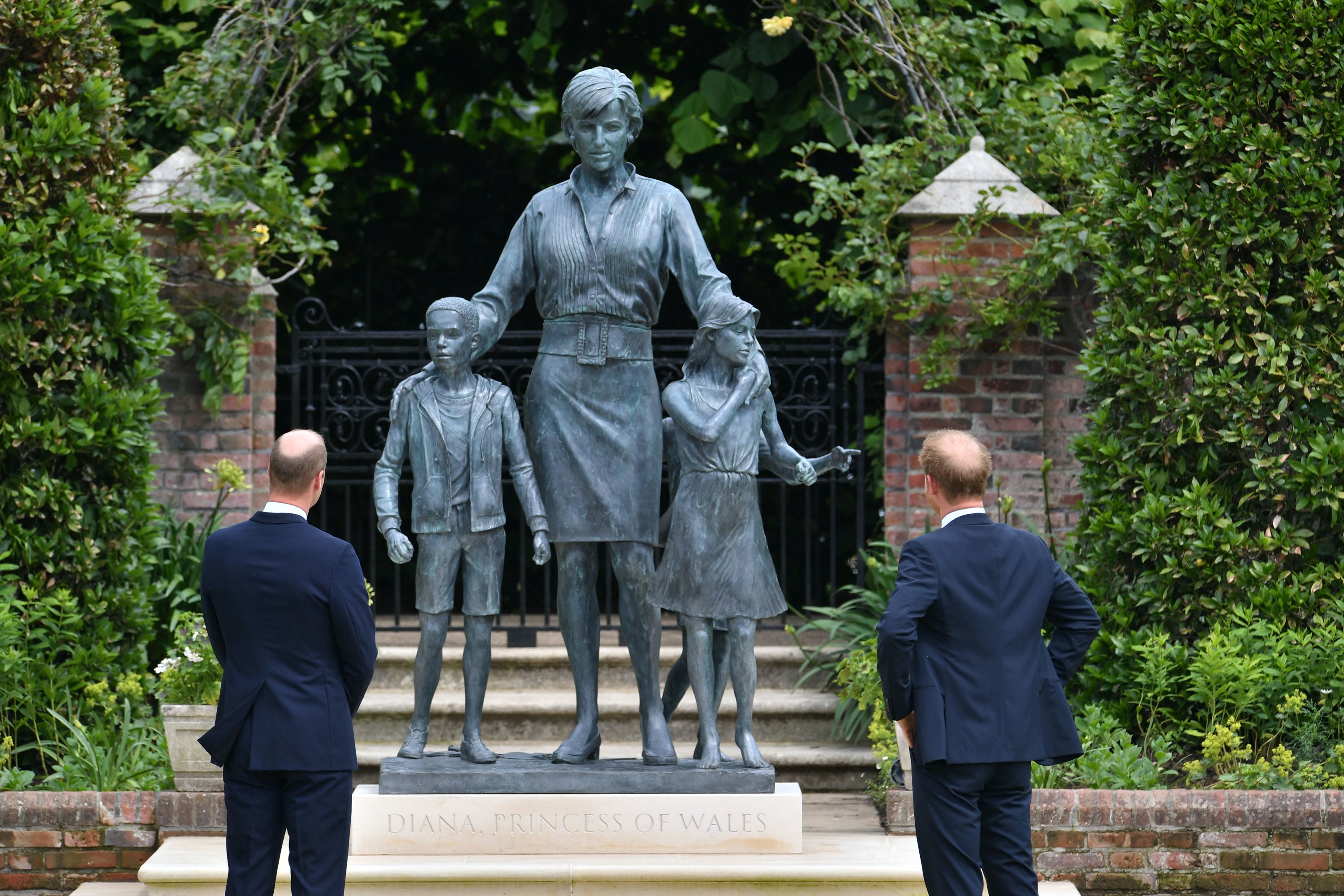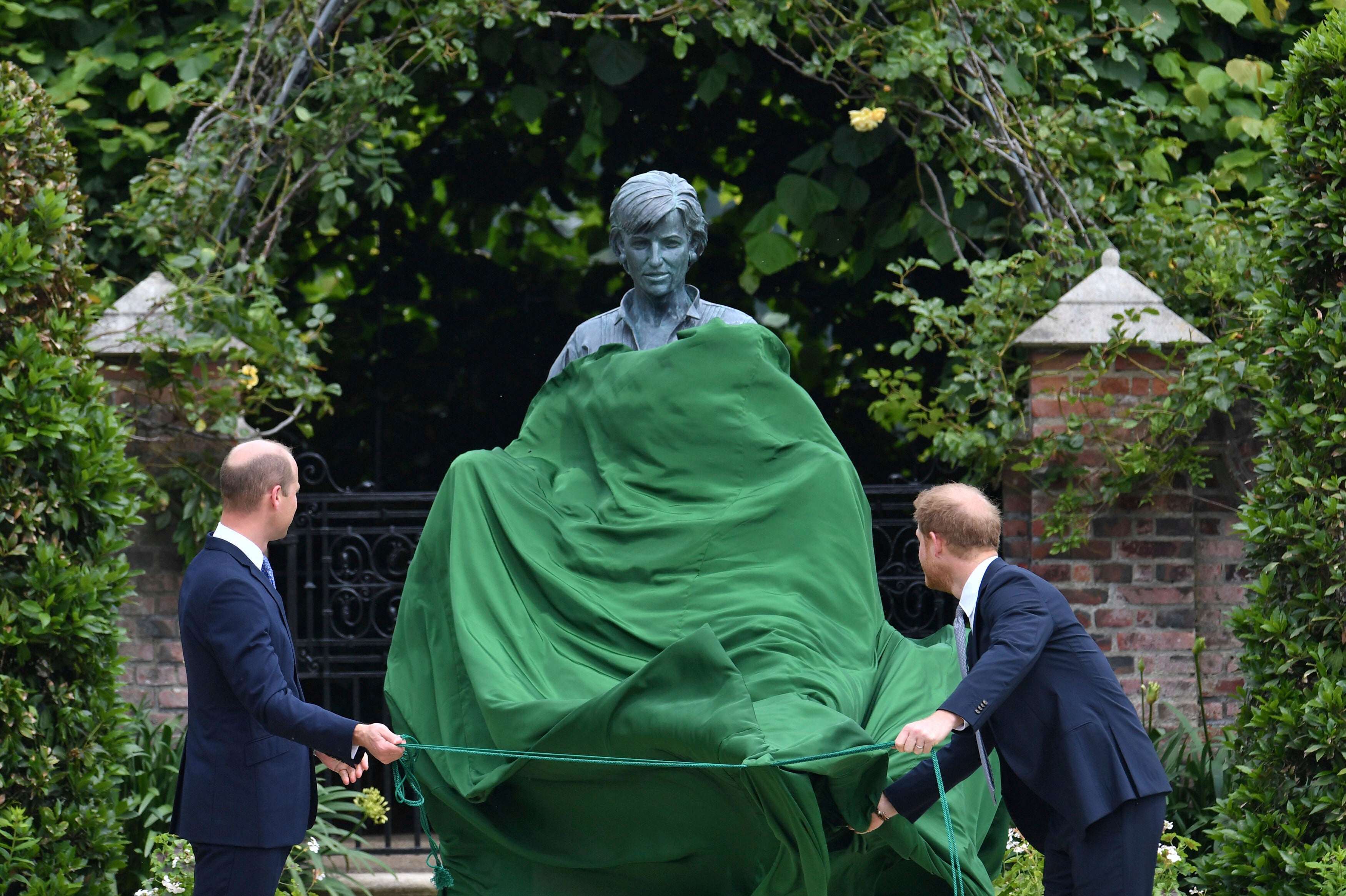The larger-than-life Princess Diana statue is a moving and slightly eerie tribute
To mark what would have been Diana’s 60th birthday, the commissioned sculptor Ian Rank-Broadley has gone for a grave, monumental approach – which was probably the best of the various options, writes Mark Hudson

Your support helps us to tell the story
From reproductive rights to climate change to Big Tech, The Independent is on the ground when the story is developing. Whether it's investigating the financials of Elon Musk's pro-Trump PAC or producing our latest documentary, 'The A Word', which shines a light on the American women fighting for reproductive rights, we know how important it is to parse out the facts from the messaging.
At such a critical moment in US history, we need reporters on the ground. Your donation allows us to keep sending journalists to speak to both sides of the story.
The Independent is trusted by Americans across the entire political spectrum. And unlike many other quality news outlets, we choose not to lock Americans out of our reporting and analysis with paywalls. We believe quality journalism should be available to everyone, paid for by those who can afford it.
Your support makes all the difference.When I heard that what would have been Diana, Princess of Wales’s 60th birthday was to be celebrated with a newly commissioned bronze statue, I had grave misgivings. Looking at the recent history of bronze statuary, particularly in London, I found it almost impossible to imagine this new work, commissioned by her sons, wouldn’t be a piece of preposterous kitsch.
From David Lloyd George to Nelson Mandela, London is littered with bronze statues which, however well-intentioned, don’t work – because the form itself belongs to the norms and standards of another time. How could bronze’s dark colour, heavy monumentality and historical heft possibly fit a much-loved figure whose charm lay in her spontaneity and naturalness – who is credited not only with overhauling the royal family’s stuffy establishment traditions, but with putting us all more strongly in touch with ourselves? The very idea felt a contradiction in terms.
From the 19th century, artists realised that “modern” clothes, with their collars and hems and shoe-laces, looked ludicrous rendered in faux-antique bronze. The great French sculptor Rodin got round this by portraying Balzac in his dressing gown, giving the great novelist a timeless appearance. Yet Diana’s look was entirely about her time: the floppy-fringed haircut, with its associations with Wham! and the cover of the Daily Mirror; the faux-demure “Diana blouse”; the quirky hats by the likes of Stephen Jones. How would they look solidified in a medium we instinctively associate with colonial generals, Victorian politicians and fascist dictators?
The people of the past who gazed in awe on statues of Marcus Aurelius or Gladstone barely knew what these people looked like. We on the other hand have endless film in our heads of Diana’s coquettish sideways glances and slightly flouncy swagger. How can you hope to translate such fleeting, micro-nuanced moments into a laborious, time-consuming process such as cast bronze without the results feeling revoltingly cheesy?
In the event, the commissioned sculptor, Ian Rank-Broadley, has gone for a grave, monumental approach, which was probably the best of the various options: no flirty smiles, no attempt to have the princess lead the visitor winsomely round the garden.

The larger-than-life-size Diana stands at the side of the garden, so she can only be approached, can only be seen as she wants to be seen, looking down at us, from beneath her trademark quiff with a serious and rather other-worldly expression, her hands on the shoulders of two children, a white girl and a black boy, with another child pointing out from behind.
Her dress is sober, a simple blouse and skirt. Rank-Broadley’s lines are clean and unfussy. No one smiles, though the boy looks out with a resolute, hopeful expression. The symmetrical arrangement brings a medieval feel, while there’s a strong sense of Victorian philanthropy in Diana’s majestic magnanimity: the Queen in People’s Hearts has become the mother of children everywhere.
And there’s a moving, and slightly eerie, sense of an image glimpsed beyond the grave. This new serious, commanding Diana is perhaps what she would have been like, had she lived. Yes, she looks good for 60, but then a lot of 60-year-olds do these days.
Is there a faint touch of kitsch to the whole enterprise? Of course there is. But this is, to my mind, by far the best result we could have hoped for under the circumstances.
Join our commenting forum
Join thought-provoking conversations, follow other Independent readers and see their replies
Comments